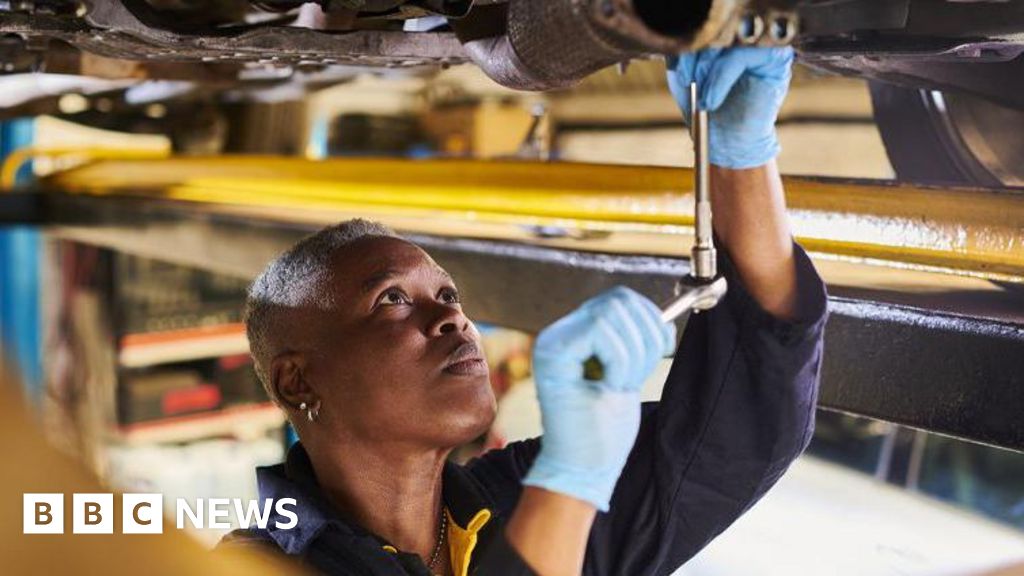Chevron has agreed to buy US oil and gas producer Hess Corporation in a $53bn all-stock deal, doubling down on its bet that demand for fossil fuels will remain robust for decades to come.
The deal values Hess’s equity at $53bn and gives the company an enterprise value, including debt, of $60bn. It is the latest step in the consolidation of the US energy sector after ExxonMobil acquired Pioneer Natural Resources earlier this month for an enterprise value of $64bn.
Chevron’s shares fell 3.4 per cent in pre-market trading. Hess shares rose by 0.6 per cent, giving it a market capitalisation of almost $50.1bn. The proposed deal represents a 10.3 per cent premium over the average of Hess’s shares over the previous 20 days.
The agreement comes as US energy companies look to deploy the bumper profits created by the energy crisis to consolidate a sector that faces long-term challenges as developed countries attempt to sharply reduce their reliance on fossil fuels.
But US energy majors such as Chevron and ExxonMobil have largely pinned their future on what they argue will be the long-term resilience of oil and gas demand. They are also keen to build scale in the US shale patch alongside the fast-growing frontier play of Guyana.
Their stance is in contrast to some European energy majors, such as BP and TotalEnergies, which are increasing investments in renewable energy at a faster pace than their US peers.
The Hess acquisition will increase Chevron’s oil and gas production by more than 10 per cent. In the second quarter Chevron produced almost 3mn barrels of oil equivalent a day, while Hess produced 387,000 boepd — up from 344,000 in 2022 as production has increased in Guyana.
In an interview with the Financial Times that took place last month, Chevron chief executive Mike Wirth defended the company’s plans to continue growing its output of oil and gas, arguing that Chevron was “not selling a product that is evil. We’re selling a product that’s good”.
He criticised forecasts from the International Energy Agency, the developed world’s energy watchdog, showing fossil fuel demand peaking before the end of this decade.
“I don’t think they’re remotely right,” Wirth told the Financial Times. “You can build scenarios, but we live in the real world, and have to allocate capital to meet real-world demands.”
Wirth said in a statement on Monday that the Hess deal “positions Chevron to strengthen our long-term performance and further enhance our advantaged portfolio by adding world-class assets”.
Hess’s assets include a 30 per cent stake in a 6.6mn-acre, 11bn barrel, offshore oil exploration scheme in Guyana — where ExxonMobil is the lead operator — and a 465,000-acre shale project in Bakken, North Dakota.
Hess chief executive John Hess, who is expected to join Chevron’s board, said the merger would create a “premier integrated energy company”.
Hess had “one of the industry’s best growth portfolios including Guyana, the world’s largest oil discovery in the last 10 years, and the Bakken shale, where we are a leading oil and gas producer,” the 69-year-old executive said.
The relatively small premium for Hess partly reflects the fact its shares were close to an all-time high, according to analysts. John Hess’s change of heart regarding a sale may be another reason.
“Hess has been touted as a potential target for the supermajors for some time. It had been mainly the stance of John Hess as a non-seller that was perceived as the reason why this has not happened before,” said Mark Kelly at MKP Advisors. “Entering his 70th year, it seems he has got to the point where he sees [the] transition [of] Hess to a new ownership structure is appropriate.”
Analysts said they did not expect significant antitrust issues with the deal, given the limited overlap between the companies’ assets.
Biraj Borkhataria at RBC Capital Markets said that the deal appeared to be aimed in part at diversifying Chevron’s production by adding Hess’s offshore Guyana stake, which the analyst described as its “crown jewel”.
Guyana’s production has soared from nothing before 2019 to an average of 260,000 barrels a day last year, according to the US Energy Information Administration, and is expected to approach 480,000 b/d next year.
“Chevron walks away with a stronger, more diversified portfolio, which should bode well for shareholders over the long term, but in the near term, the news could weigh on the shares,” Borkhataria said.
As part of the deal, which is expected to close in the first half of next year, Chevron said it would issue about 317mn shares. The companies estimated cost savings of about $1bn within a year of closing, while Chevron said it expected to increase asset sales and raise proceeds of between $10bn and $15bn through 2028, before tax.
The combined company’s capital expenditures would be between $19bn and $22bn.
Prior to the announcement, Wirth had told the FT that big deals were “more difficult today”, noting that companies were better run than they were when Chevron bought Texaco for $36bn in 2000.
“Could it happen? I think it probably could,” he said, but he highlighted the regulatory and integration challenges associated with big deals.
“Big companies are complicated to run; they’re really complicated to put two of them together. Even putting a small company together with ours is a complicated task,” he said. When combining two large companies, he added, “it’s years and years’ worth of work to actually, you know, combine them.”
Chevron was advised by Morgan Stanley and Evercore on the deal, while Hess was advised by Goldman Sachs and JPMorgan.
Lawyers on the deal were Paul, Weiss, Rifkind, Wharton & Garrison for Chevron and Wachtell, Lipton, Rosen & Katz for Hess.
Credit: Source link











